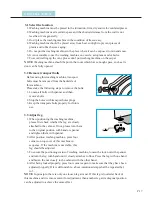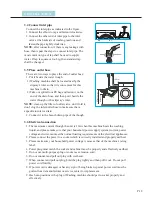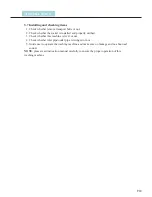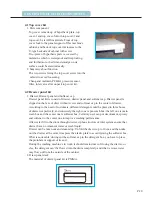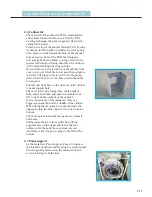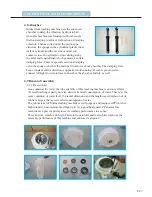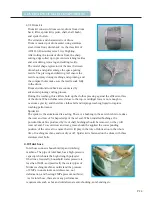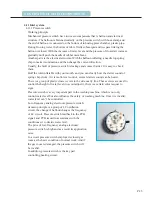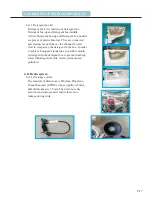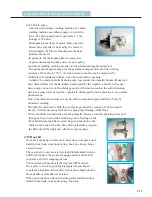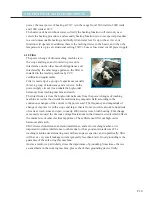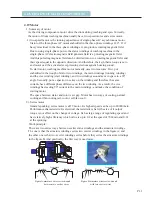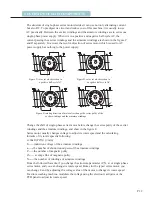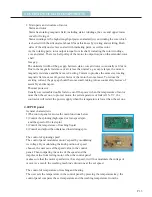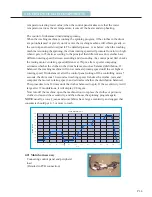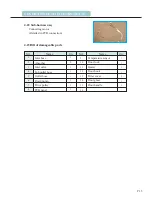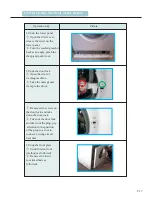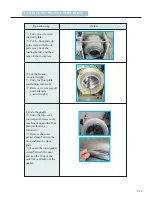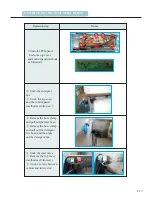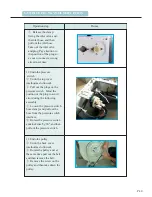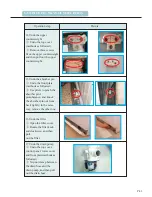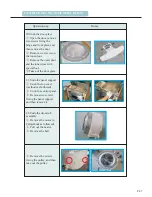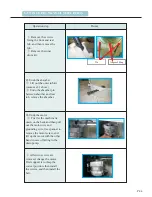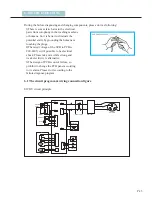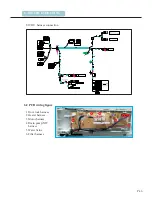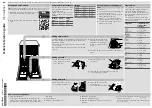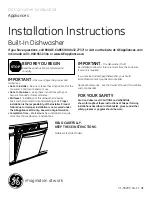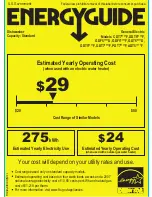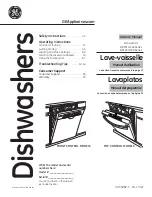
P.31
4.19 Motor
1. Summary of motor
As the driving components, motor drive the drum during washing and spin. Currently,
the motor of drum washing machine usually have two-speed motor and series motor.
1) two-speed motor is the running capacitance of single-phase AC asynchronous motor.
Stator of the three-phase AC motor embedded in the three-phase windings 120°. If it
has symmetrical in the three-phase windings, it can produce rotating magnetic field.
Due to using single-phase power, the stator windings of washing machine in the
single-phase AC electromagnetic field generate field is a pulsating magnetic field.
And this pulsating magnetic field can be divided into two a rotating magnetic field, and
their speed equal to the opposite direction. And therefore, their synthetic torque is zero
and motor can't be activated except issuing electromagnetic buzzing sound.
To start motor, washing machine motor normally uses two measures: First, put
embedded in the trough of stator two windings, the main windings (running winding)
and the vice winding (start winding), and two windings around axes in space in a 90°
angle. Secondly, put a capacitor in series on the winding and therefore the same
currents have different phase difference on the two winding. As a result, the vice
windings has leading 90 current to the main windings , and make the condition of
°
starting motor.
The space between stator and rotor is air gap. Motor has two ways of cooling, natural
cooling and fan cooling (air-cool or self-fan cool).
2). Series motor
General speaking, series motor is a DC motor. Its highest speed can be up to 20000r/min.
Performance characteristic: Its electrical characteristic is hard, the size of it output
torque is not effect on the change of voltage. Its has large range of regulating speed and
has relatively high efficiency which value is up to 0.2 at the speed of 700r/min and 0.63
at the spinning.
Work principle:
There are two series ways between exciter stator windings and the armature windings.
The one is that the armature windings series two exciter windings in the figure A; and
the other one is that two exciter windings series before they series the armature windings
in the figure B. And practically, the first way is used more.
Exciter
Exciter
i
i
Armature
Exciter
Exciter
Armature
Figure A:armature wires series-wound
between two exciter wires
Figure B:armature wires series-wound
with two exciter wires
4.OVERVIEW OF MAIN COMPONENTS

